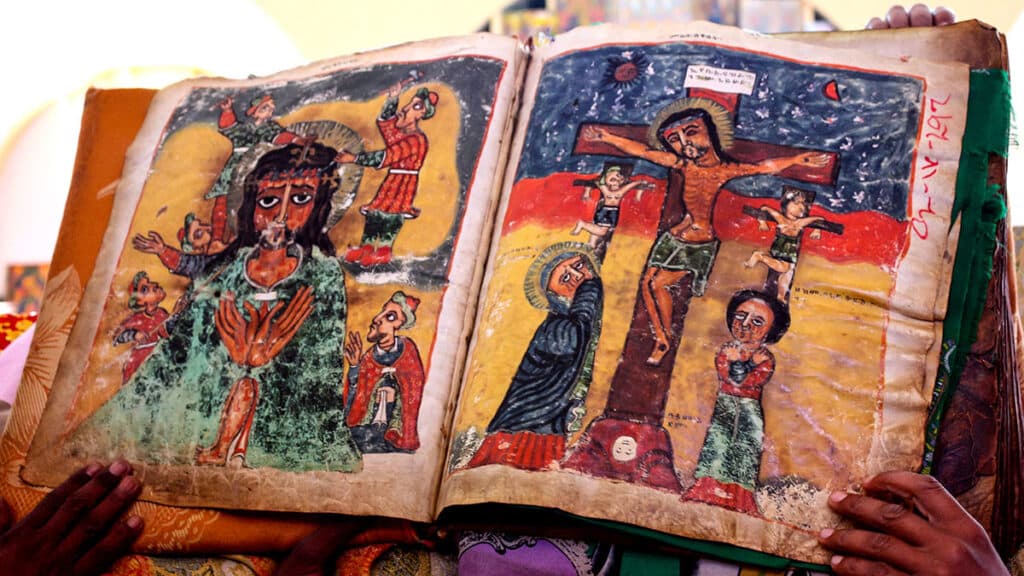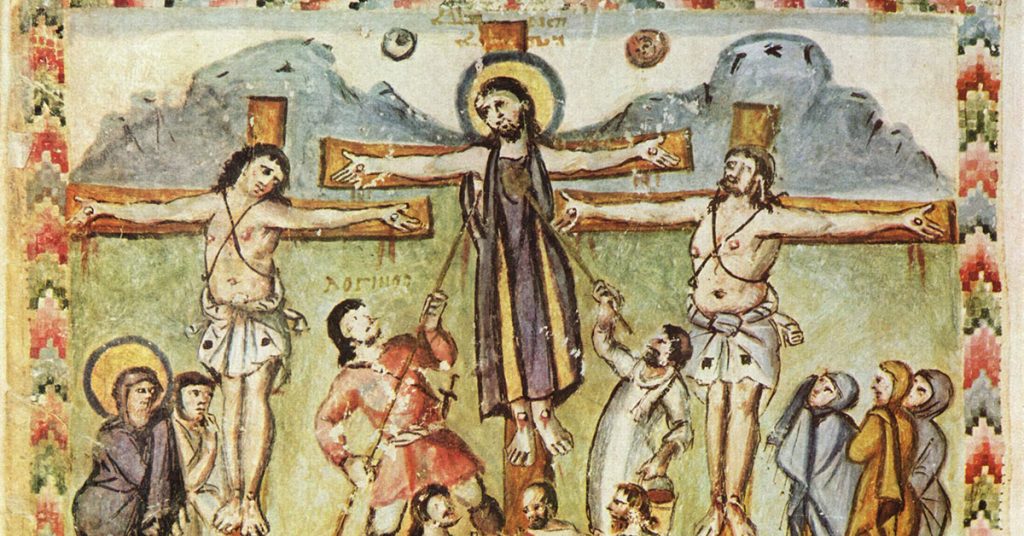Good Friday (Viernes Santo), the Friday before Easter, is a Christian commemoration of the crucifixion and death of Jesus. It is part of Holy Week, the most sacred week of the Christian year.
Good Friday 2024
The next Good Friday is Friday, March 29, 2024.
What Does it Mean?

What does this sad commemoration mean? It’s such a terribly sad moment. Does it mean we should accept a horrible life? Is it a ritual that commemorates the passing hardships of winter?
The religious interpretation is something along the lines of Jesus sacrificed his human life to forgive humanity for its sins and offer the redemption of eternal life in heaven.
Perhaps the meaning of Good Friday is that life is filled with both joys and sorrows. In good times and bad, we have to keep going and never give up. Sacrifice will be rewarded. It’s something of the fate of parents who sacrifice tirelessly for their children. It’s kind of the immigrants fate.
It’s beyond our understanding. Good Friday probably means something different to everyone, from nothing at all to a primary source of forgiveness, redemption and eternal life.
Whatever it means, this moment changed the history of the world. Crucifixions were a common Roman punishment for enemies of the state. There were thousands of crucifixions so that wasn’t a big deal. Jerusalem was an unimportant town on the far edge of the Roman Empire. At the time, Jesus was not an important person.
Somehow, what he did and the stories that arose from his sacrifice inspired much of the world.
Good Friday Traditions
Across the Latin world, there are reenactments of the Stations of the Cross, the key events of that day long ago. Sacred statues or even live actors are paraded through the streets with the faithful.
The passion play is a form of pre-literal education. We don’t do it much in the United States, but it’s a very big deal in many Latin countries.
In a legacy of colonialism, Good Friday is a national holiday in:
- Angola
- Anguilla
- Antigua and Barbuda
- Argentina
- Aruba
- Bahamas
- Barbados
- Beliz
- Bermuda
- Bolivia
- Bonaire, Sint Eustatius and Saba
- Botswana
- Brazil
- British Virgin Islands
- Cameroon
- Canada
- Cape Verde
- Cayman Islands
- Chile
- Colombia
- Costa Rica
- Cuba
- Curaçao
- Dominica
- Dominican Republic
- Ecuador
- El Salvador
- Equatorial Guinea
- France
- French Guiana
- Gambia
- Ghana
- Grenada
- Guadeloupe
- Guatemala
- Guyana
- Haiti
- Honduras
- India
- Jamaica
- Kenya
- Malawi
- Mexico
- Namibia
- Nicaragua
- Nigeria
- Panama
- Paraguay
- Peru
- Philippines
- Portugal
- Puerto Rico
- Rwanda
- Saint Kitts and Nevis
- Saint Lucia
- Saint Martin
- Saint Vincent and the Grenadines
- Sierra Leone
- Sint Maarten
- South Africa
- South Sudan
- Spain
- Suriname
- São Tomé and Principe
- Tanzania
- Trinidad and Tobago
- Turks and Caicos Islands
- US Virgin Islands
- Uganda
- Uruguay
- Venezuela
- Zambia
- Zimbabwe
The Rabbula Gospels

The earliest image of the crucifixion in a manuscript is found in the Rabbula Gospels, a 6th-century illuminated manuscript from what is now Syria.
The book is in the Laurentian Library in Florence, Italy.
